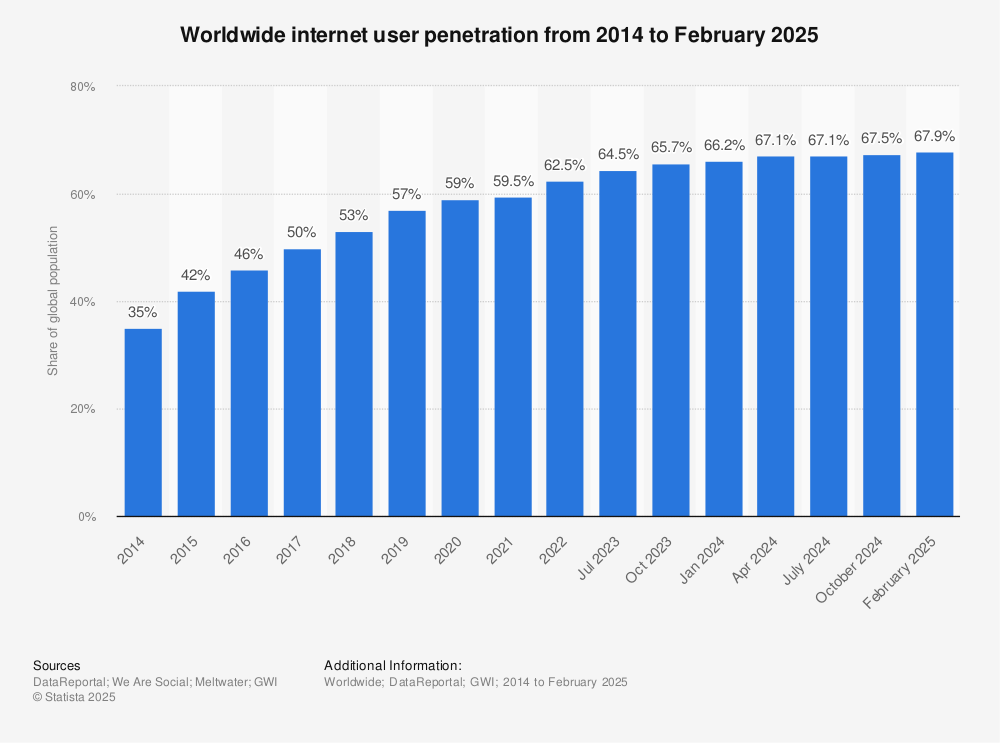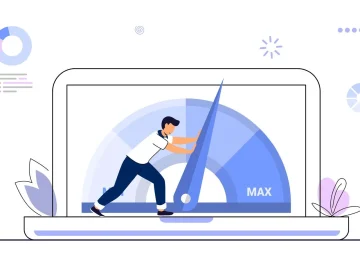“Should I be using a search engine promotion or pay-per-click advertising?” is the common question we hear from customers interested in digital marketing. And know what? There cannot be a clear-cut “yes” or “no” answer. The choice heavily depends on marketing objectives and business needs.
What’s more, prior to considering search engine marketing for getting wider exposure, you’d better know at least basic difference between SEO & PPC. It will not only help to make a deliberate choice but also allow to avoid unnecessary spending and save time. So, SEO vs. PPC: which is better?
What is SEO?
SEO or Search Engine Optimization is basically a free method of driving traffic to a website through organic search. “Basically” means you still have to invest: your own time, if you decide to make the website search engines friendly yourself or pay money, if your choice is to hire qualified SEO specialists.
The website will rank high if it is relevant and authoritative. The number of quality links from other sources and return visitors form authority. Regularly published, quality up-to-topic content optimized for keywords builds up relevancy.
The popularity of digital marketing has greatly increased over the last 5 years:
Although following the stats we can see a small drop in interest at the beginning of this year, digital marketing will still remain one of the hottest trends in the digital world.
Can you imagine that 46.8% of the global population searched online in 2017? More than that, the number of Internet users is believed to grow up to 53.7% in 2021. Check the figures yourself:

Find more statistics at Statista.
More Internet users – more website visitors. More website visitors – more sales. Quite impressive business opportunities, right? So make your website search engines friendly to appear high in search results and catch the attention of the right audience.
SEO Promotion Types
The SEO process consists of two major components: internal and external SEO or onsite and offsite SEO. If you’re working on a SEO vs. PPC strategystrategy, it’s extremely useful to understand and differentiate these two notions.
Onsite SEO is a process of tweaking certain website elements so that search engine bots can easily crawl it, understand the structure and content. Remember, the more data you add the higher your chances to get top positions in search results. Among the key factors or elements to consider, there are:
- Easy-to-navigate website structure.
- Useful for people and unique content.
- Internal linkinglinking.
- Page titles and descriptions (metadata).
- Smart keywords distribution.
- Content compliance with metadata.
- Tech elements: sitemap, robots. .htaccess.
- Relevant media content distribution.
- Enticing CTA (call-to-action).
- Website optimization in accordance with visitors’ behavioral factors and much more.
Offsite SEO includes actions conducted outside the website to improve the domain authority and get quality external links:
- External backlinks and anchor list.
- SMM factors
- Business adding on maps and in catalogs.
- Increasing the PR indicator, etc.
Onsite and offsite SEO complement each other, signify what you rank for and how high your rank will be.
When considering advantages and disadvantages of SEO, remember that it will take time to get tangible results from your SEO activities. Done right it ensures a continuous flow of free targeted traffic with a high chance for converting.
What is PPC?
PPC or Pay-Per-Click Advertising is a paid method of driving visitors to a website. Simply put, the process looks like the following:
- You select target keywords (Google Keywords Planner can help you here).
- Create ads.
- Set your budget that defines where, when and how the ad appears on search engine results pages (SERP).
- Pay only when a user clicks on your add.
- Gain more visibility and reach potential customers.
Speaking about the advantages and disadvantages of PPC, this advertising method allows you to get almost immediate results. The ad starts working the moment you publish it. Of course, you decide how much you are willing to spend, what keywords and regions to target.
Sounds great but there is no guarantee that a visitor, who clicked on your ad, will convert into buyer. So, bidding wars for top keywords and positions can get really tense.
PPC Types and Strategies
To reach your potential customers, you should interact with them across multiple devices and channels. PPC can be a perfect solution as it covers numerous formats, platforms and ads types.
Social Media Advertising
Facebook, Twitter, LinkedIn, Instagram, YouTube. This is where your future clients spend most of their time and this is where your ads should appear. Advertising on social media you not only reach a more targeted audience and raise brand awareness but also nurture the cross-channel relationship with buyers and boost business visibility.
PPC Search Ads
Search is the most common and popular PPC channel with Google, Bing, Yahoo and other search engines available for ads placement. Search advertising is remarkably flexible, ensures high targeting and can fit almost any business type.
Video Ads
Being extremely interesting and interactive for target customers, video ads show impressive engagement and conversion rates. What can tell your story better than a video? Use this ad format to inform and educate, to reach new clients and gain greater visibility.
Shopping Ads
If you are an e-commerce business owner, you cannot put this ad format aside. Showing information about the searched product, its image and price, shopping ads bring in hot leads, can generate more sales and improve ROI. This is a path worth exploring, isn’t it?
Mobile Ads
Most of the ad types mentioned above can be shown on mobile. Mobile advertising made a huge leap ahead in a few years. To target your customers with mobile ads you can use social media, apps and mobile websites. In-app ads, mobile banners, pop-up advertisements and much more open limitless opportunities for business promotion.
Pay-per-click advertising popularity
If you still doubt the popularity of PPC advertising, stats outlining online advertising revenue between the 1st quarters of 2007 and 2017 will help to see why this advertising method is worth trying.

Find more statistics at Statista.
The second quarter of 2017 showed that the revenue from online advertising increased up to 23.1 % than in the 2d quarter of 2016 with the total amount of 20.8 billion U.S. dollars.
It is expected that the number will continue to grow and will reach more than 37% this year.
A noticeable shift in expenditures from desktop to mobile advertising will continue to increase. Thus, mobile ads is definitely a trend you should keep a close eye on. Especially, when it is expected to see the growth of mobile advertising spending up to 129% that will reach almost 65.9 billion U.S. dollars in 2019.
As the figures for mobile advertising expenditures by industry show, this promotion channel was and will remain the most popular among retail business owners. It does not mean, however, that mobile ads will be less effective for promoting IT or business consulting services.
You can also consider other digital advertising formats, studying digital ad spend growth figures:
Over the last two years, people spent more on video and social media ads, where paid search, classified and display ads were far less popular worldwide. We won’t see a remarkable rise of expenditures on any advertising format as it was back in 2016. The two leaders mentioned above will get almost an equal share of 24.5% and 23.5% correspondingly.
Now you have facts and figures to rely upon when making a decision. Add your desire and enthusiasm to this formula and nothing will keep you from building a rewarding PPC campaign.
SEO vs. PPC Comparison
|
SEO |
PPC |
|
Budget |
|
| Good things are never free. And so is a good SEO. It implies indirect costs that may be spent on consulting or a full set of SEO services. | You pay for advertising space on search results pages and for each click on your ad. |
|
Cost-effectiveness |
|
| In most cases, you can pay a minimum for SEO activities that have a long-lasting impact and drive more qualified traffic. You’ll have to pay for backlinks and quality content, especially when marketing in a competitive niche. | Only you decide how much to spend on PPC advertising and pay only after the user gets to your website. But! For more clicks, better positioning and highly-competitive keywords you will have to pay more. |
|
Impact speed |
|
| SEO activities have a gradual impact. It can take months to see sizable improvements, but they ensure constant traffic flow. | Your business gets the immediate exposure right after the ad goes online. But the stream ends the moment you stop paying for your ads. |
|
Time investment |
|
| It takes time to build up organic traffic and you have to stay up to date with the latest search engine algorithms. But the effect will last a couple of months even if you stop working on SEO. | It’s rather simple and quick to set up a PPC campaign. To get prime results and avoid spiraling costs, you cannot just leave it but need continuously optimize and improve your ads. |
|
Control |
|
| You cannot know or control how much and what type of traffic you get. Only Google has the full control over ranking factors and over the results of your SEO activities as well. | You can keep a tight rein on all aspects of PPC advertising, easily customize and adjust it to regulate costs. |
|
Guarantee |
|
| Although it should be your top priority with SEO, there is no guarantee for an immediate 1st- page ranking. Various search trends and never-ending competition urge to focus on niche markets for a faster impact. | PPC is able to deliver a lot of clicks and visits, but there is no guarantee that the website visitors will convert into customers. Once they reach your website, you need to interest them in making the order. |
|
CTR |
|
| Organic search results earn more trust than paid ads. The higher you appear in SERP, the better CTR and ROI you get. | If you run a PPC campaign with highly targeted and optimized ads, you get visitors who are 100% interested in your offer. The CTR here will be even higher, but you will have to pay more for such ads. |
|
Relevance |
|
| Some SEO techniques died away while others, like local SEO and optimization for mobile devices, become highly relevant. If you want to build brand credibility and get a constant organic traffic flow, SEO is a perfect solution. | PPC advertising, especially for mobile and on social media, is extremely popular. The competition is also fierce here. But if you need to get quick results and traffic flow from the very start of the marketing campaign, this is a solution to opt for. |
SEO vs. PPC: which one to select?
As the SEO vs. PPC statistics shows, both methods will continue to rule digital marketing in the upcoming years and are worth investing your patience, time and money in. It’s difficult to select a winner. Search optimization and paid advertising serve different business objectives.
You are only starting a business, target locally or thinking about a short-term marketing campaign and want quickly drive traffic to your website? Try video, mobile or social media advertising. As a bonus, it will help to understand what keywords work for your niche and use this knowledge for SEO.
If your marketing budget is limited, but you want to advance brand credibility, connect with a far larger audience, ensure continued visibility that won’t stop overnight and are ready to wait for results, SEO will suit all your needs.
Summing up
As the comparison shows, there is a tangible difference between SEO and PPC. To double your chances of increasing traffic in a short term and ensuring a strong online presence for a long term, you’d better include them both in your digital marketing campaign.
This can be your action plan:
- 1. Get initial traffic with PPC advertising.
- Switch to SEO for a long-term perspective.
- Leave PPC for short-term marketing campaigns.
4. Opt for professional digital marketing services if you do not have enough skills or experience. Otherwise, you risk spending your marketing budget in vain and getting miserable results.







